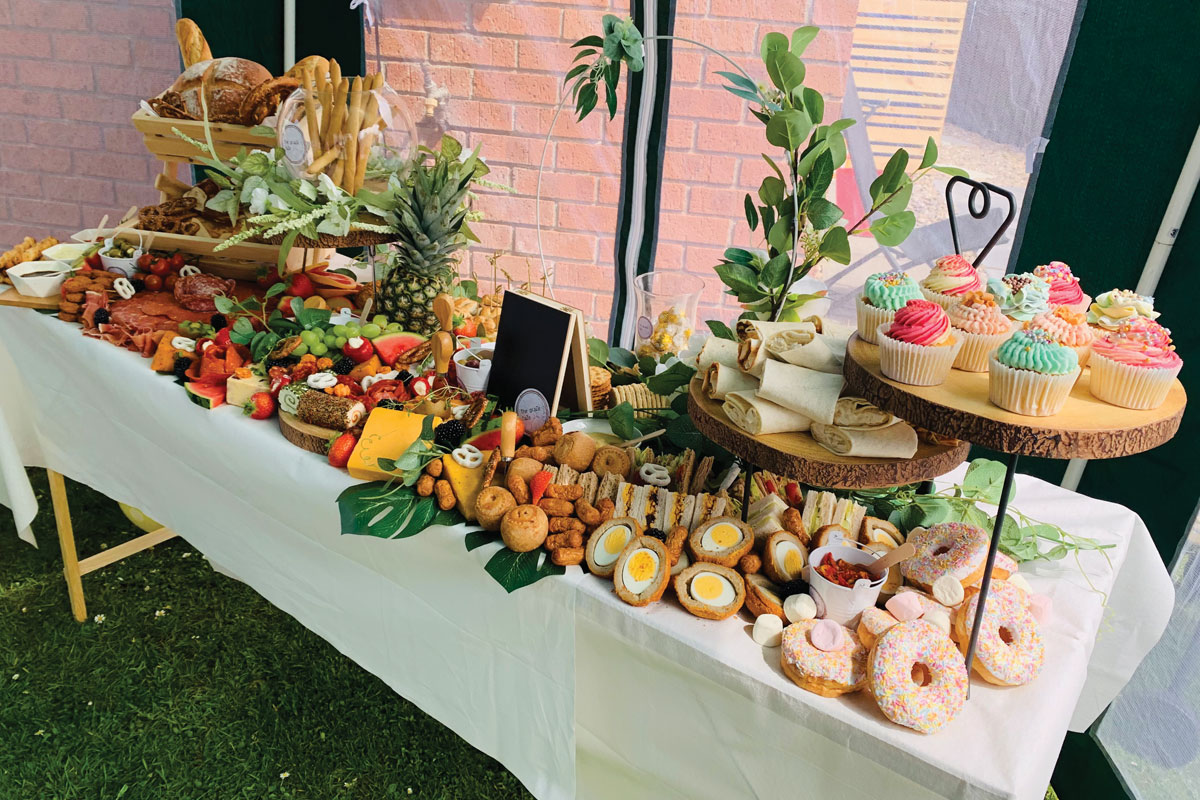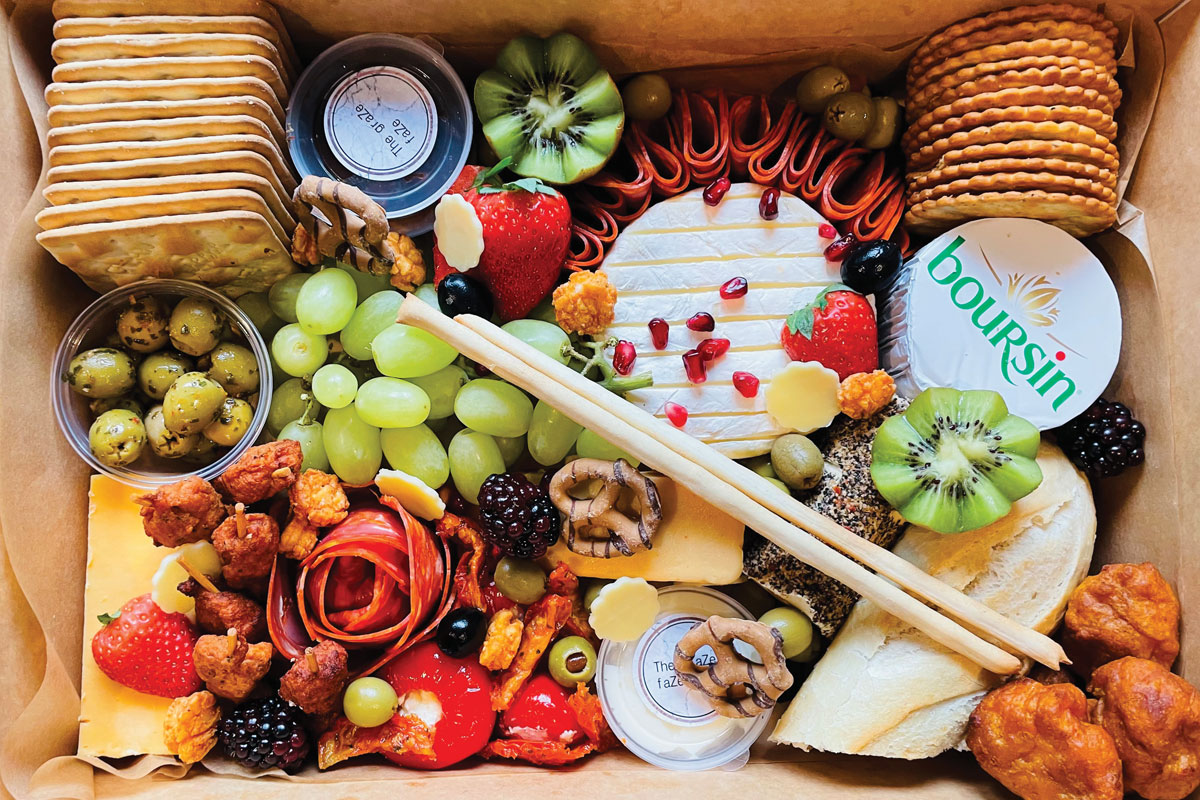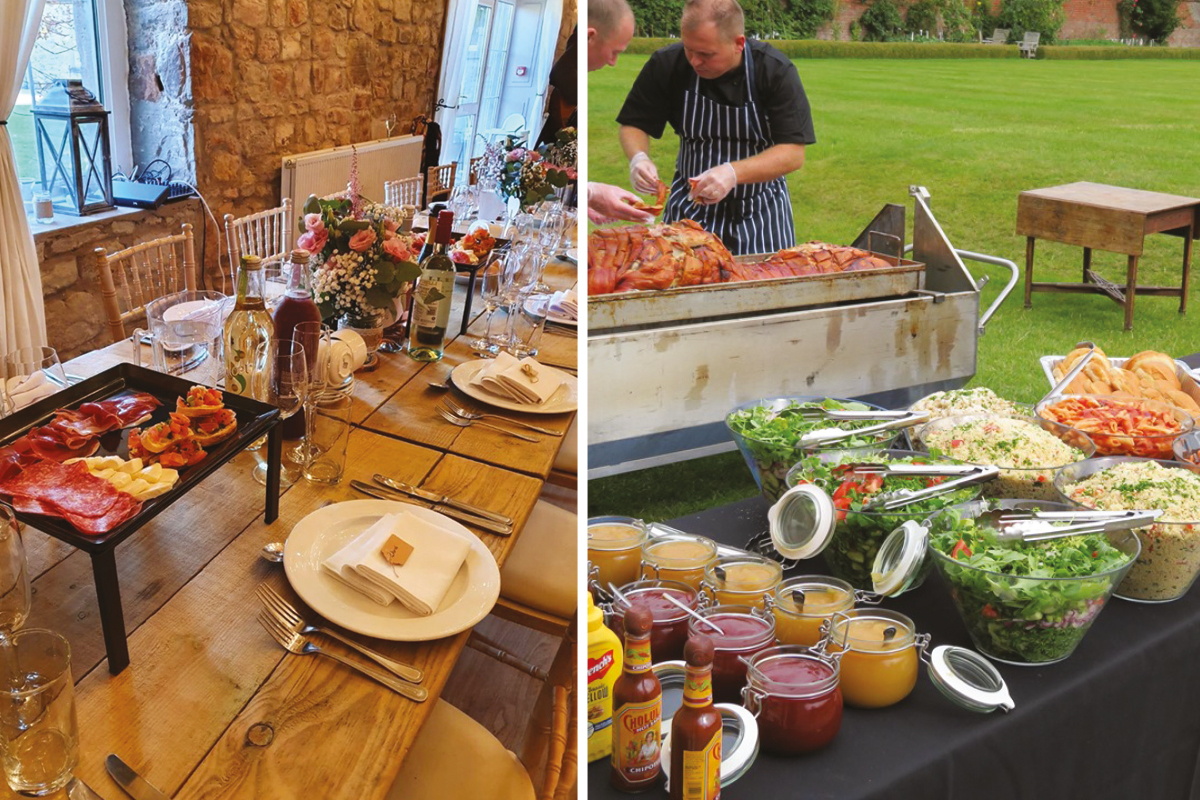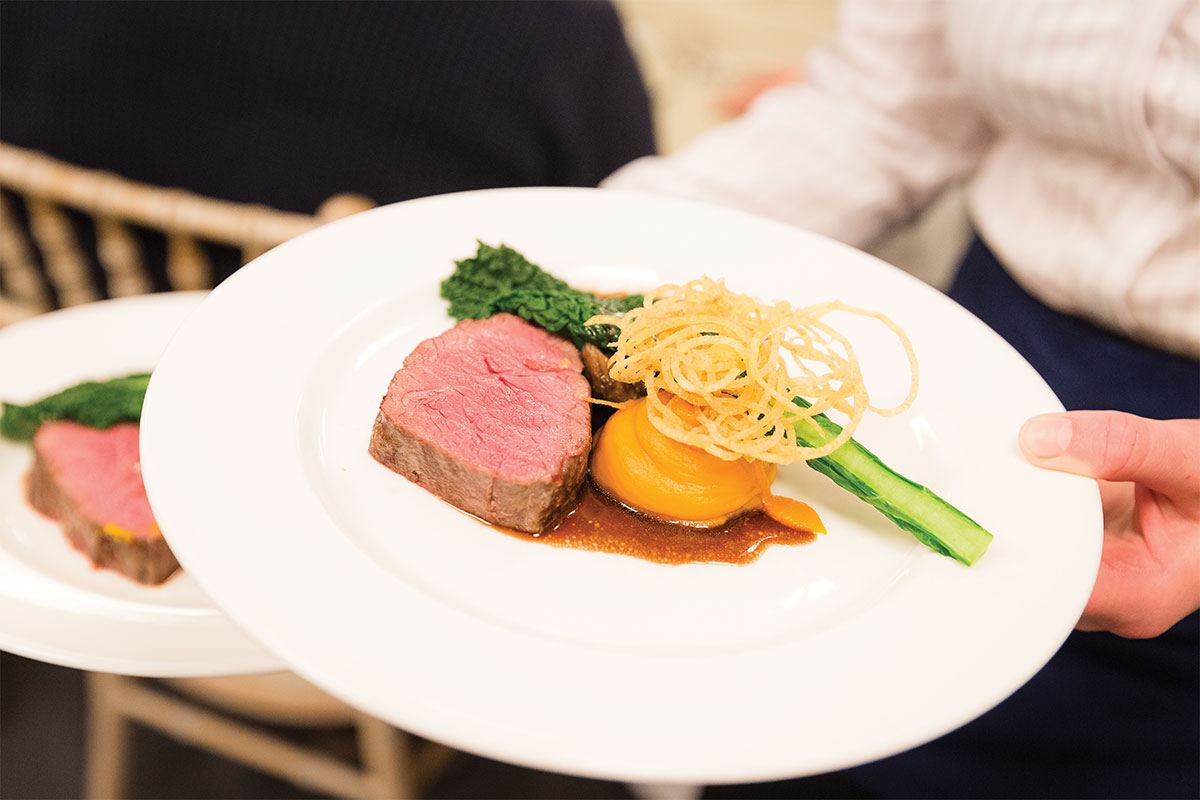Looks aren’t the only thing you’ll be serving on your wedding day – it’s time to think about the food and how you’ll present it
Not so long ago, most wedding meals were utterly predictable: three courses designed to appeal to the least adventurous palate. No longer. Couples are putting a lot of thought into what they plate up for their guests, and a new crop of serving styles ensures it’s a feast for the eyes too. But what will work for your day, and what are the pros and cons of each? We consulted the experts…
Grazing tables and boxes
“With the rise in laid-back weddings, graze buffets are the new style of wedding eating,” argues Victoria Cone from West Lothian-based company The Graze Faze. “A huge pro is that there is something for everyone, allowing you to offer your guests more choice of both savoury and sweet items. Grazing tables also generate a more relaxing atmosphere, make for an eye-catching display, can be more budget-friendly than a sit-down meal, and look good in both formal and informal settings.”
While they may look fabulous initially, how do the spreads hold up after hungry guests have descended? “We design the table so that when food is taken from the display it still looks beautiful,” Victoria reassures us. “But if this is something you’re worried about, we can provide a member of staff to keep the grazing table full and pull together the gaps throughout service.”
Sharing boards
“Our sharing board starters are proving really popular at the moment,” notes Elli Preece from West Lothian’s Food Creations. “Couples usually select five or six options from our vast menu, and these can be served either on raised sharing boards or a long wooden sharing platter.”
Elli is an advocate of the interactive nature of this style, saying it encourages conversation among guests, but she acknowledges that certain items may prove to be particularly popular, meaning some portions of the boards are polished off quickly. “To counteract this, we make sure our staff replenish all the boards throughout the room and that we always have enough food to cover all the tables twice over.”
Barbecues
Another example of how informal weddings are influencing serving styles, Elli and the team at Food Creations have observed an increase in the number of couples opting for a barbecue in the summer months: “We can even include a hog roast along with our BBQ, which is a real showstopper. The advantage of this style is that it gives couples the opportunity to make full use of beautiful outdoor spaces at their venue,” she says.
“A disadvantage, of course, is that it is very much weather dependent. In the past, we’ve brought marquees to events to counter this, always serving the food just as we would at a typical BBQ so guests get the same experience.”
Buffets
Kate McKenna of Kate’s Bespoke Catering is a fan of the choice offered by a buffet, but warns that these can be a very wasteful option: “Some firms over-cater by as much as 50% to ensure that the last person served still has a choice. For this reason, we always recommend family-style sharing at the table instead. This gives guests options, but there is an equal allowance on each table for everyone to try everything without your supplier having to prepare far too much food.”
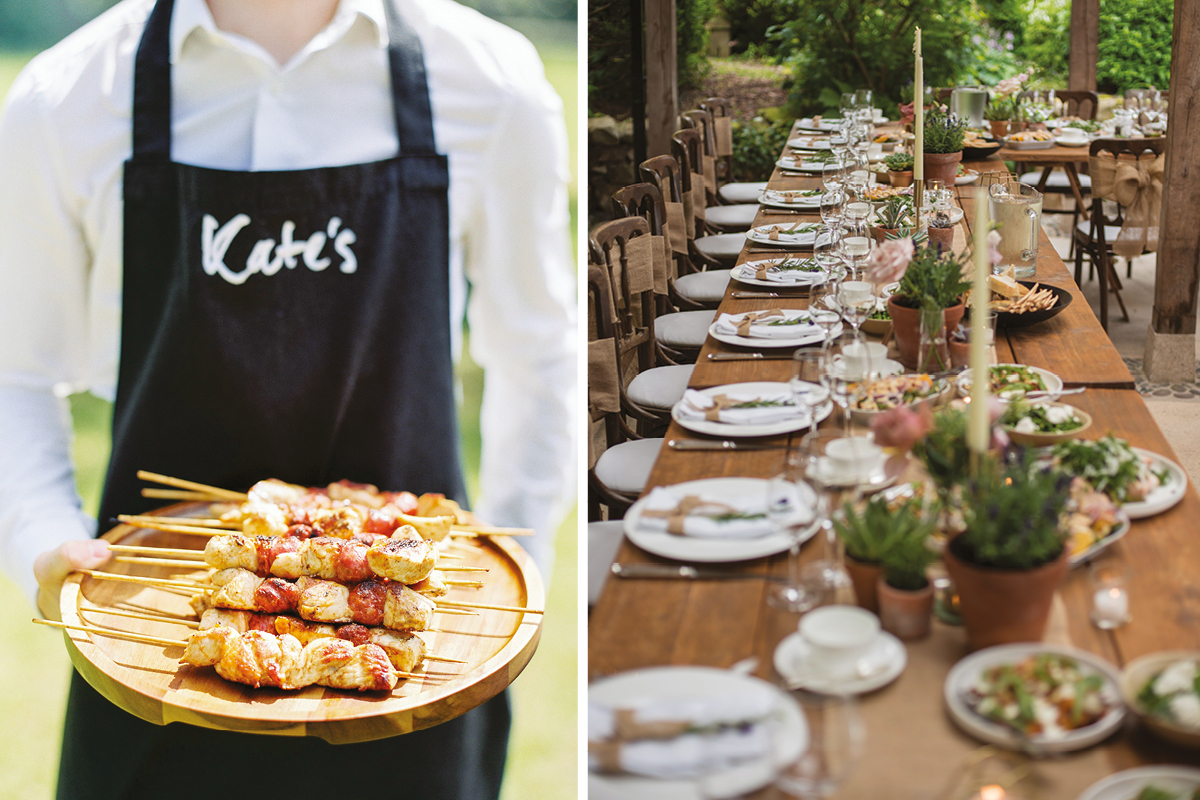
Left: Barbecue staples, like these tempting kebabs from Kate’s Bespoke Catering, are a clever option for an outdoor wedding (Photo: Brancoprata); Right: Kate’s Bespoke Catering argues that, with a little extra thought, traditional plating styles can be far from dull – and judging by this elegant tablescape, we totally agree! (Photo: David Donaldson)
Carve at the table
“This fits into the relaxed family style that is so popular,” Kate tells us. “Clients often request that a guest from each table be nominated to carve the beef. This can be tricky when you have someone who is not experienced at carving meat (yes, there is a right and wrong way!) and can be more expensive as you need to allow for people cutting portions that are too large. It may also slow down the service, so clients need to allow a little extra time.”
Traditional plated options
“Some people feel that plated meals lack wow factor, but traditional does not have to mean boring!” insists Kate. “We love working with clients to create bespoke courses that not only taste great but look amazing as well. Giving guests a pre-ordered choice means that you can have an exciting left-field option while still having dishes that appeal to those with plainer tastes.”

